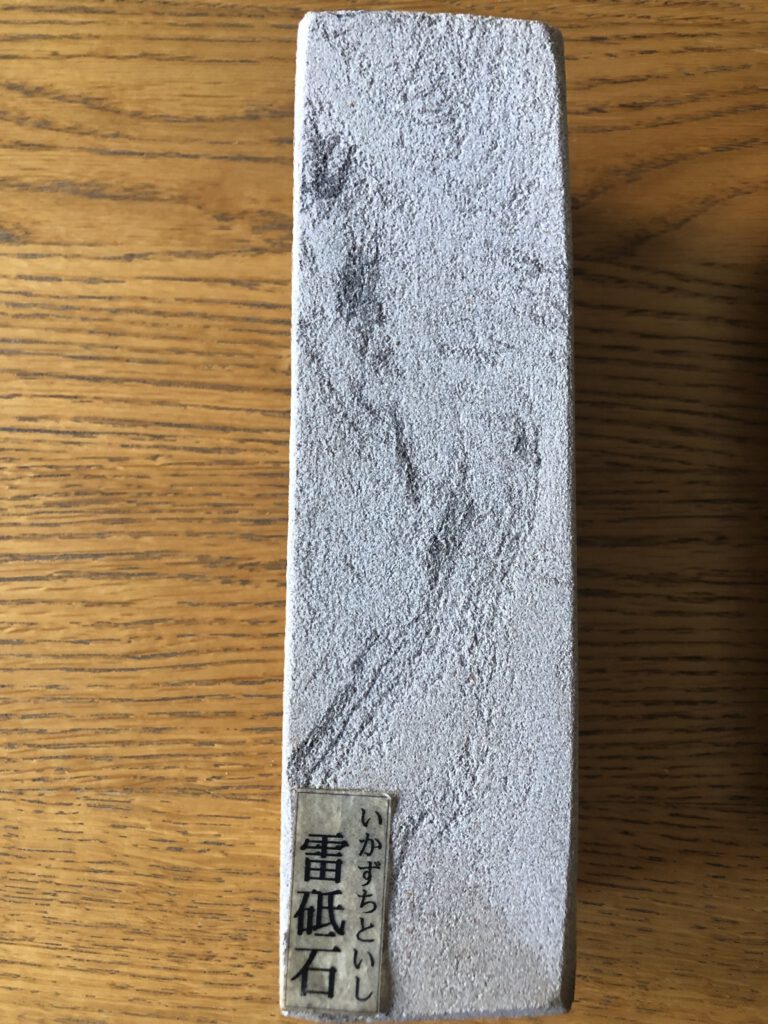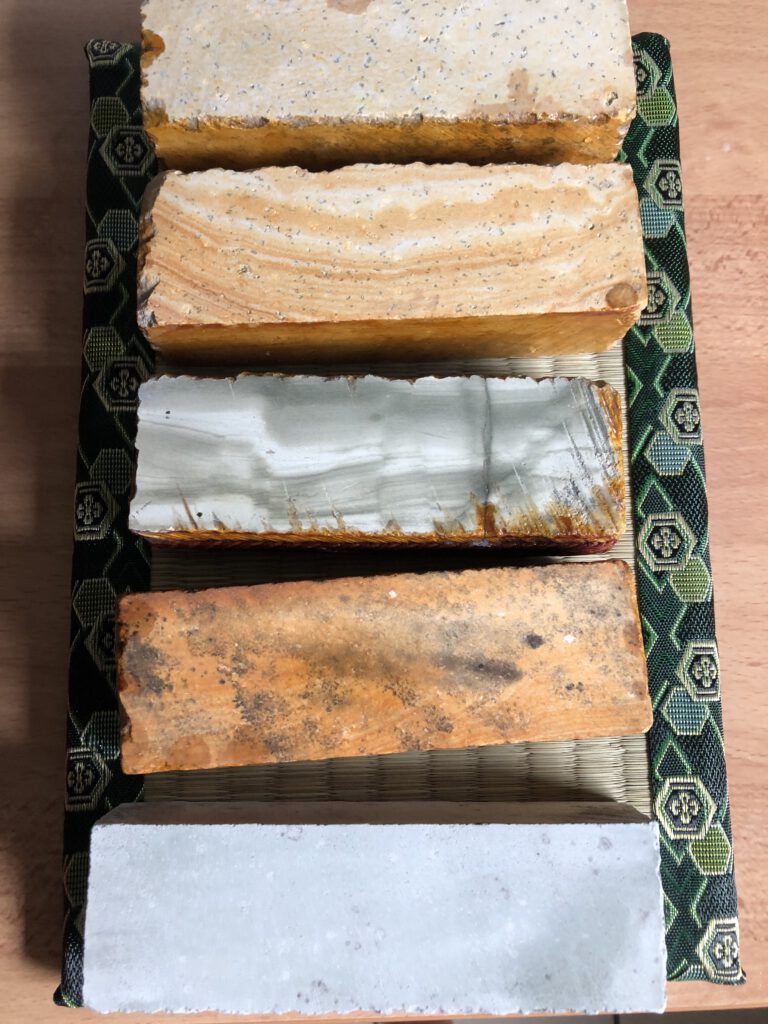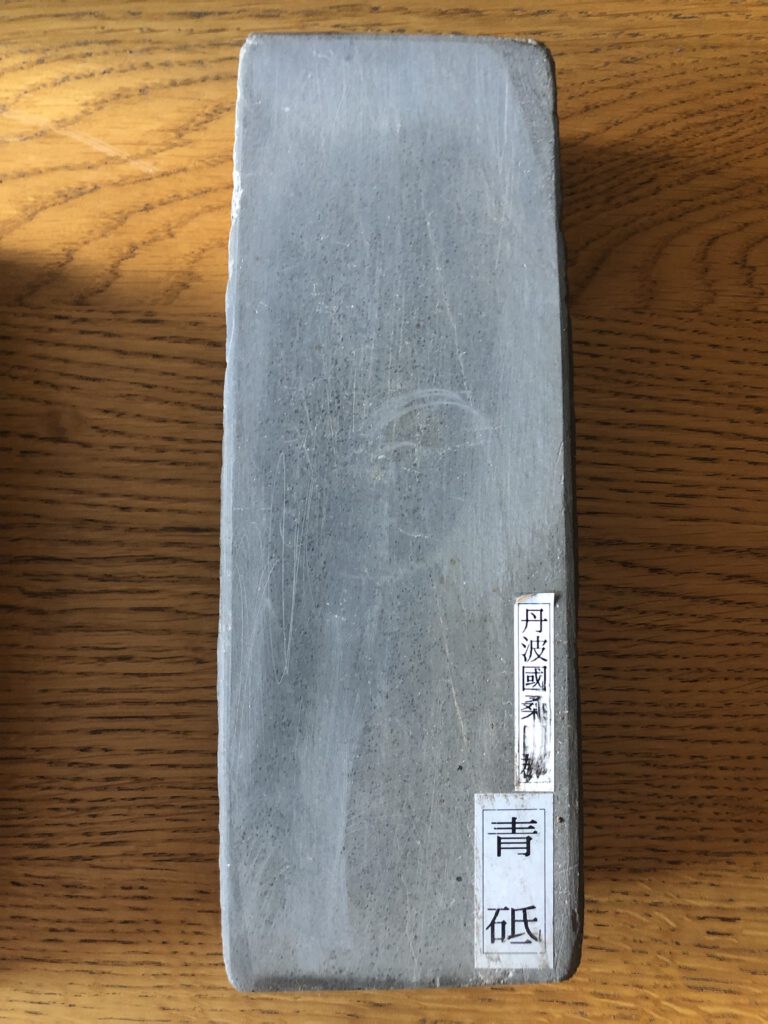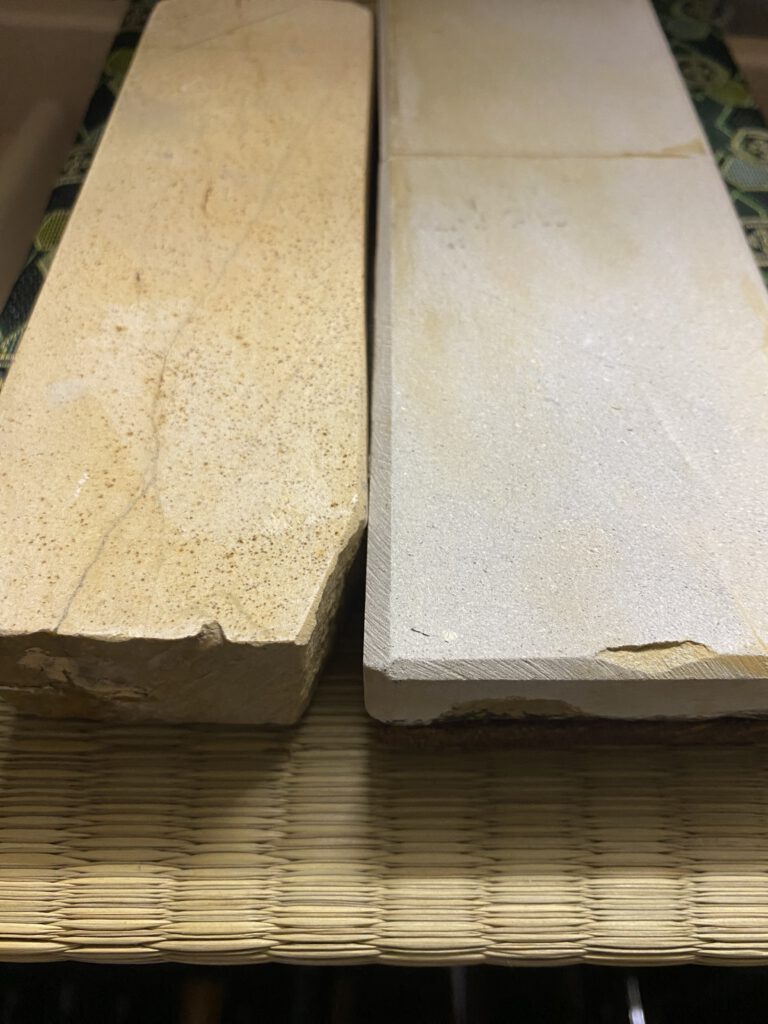
Whetstones can basically be divided into rough Arato(ishi) 荒砥, medium Nakato(ishi) 中砥 and fine Shiageto(ishi) 仕上げ砥, or in man-made Jinzôtoishi 人造砥石 vs natural Tennen Toishi 天然砥石.
Natural Arato are mainly sandstone based like the Ikazuchi above from Nagasaki prefecture. Many Arato have been mined in Nagasaki prefecture, some in Wakayama (Kishû Ōmura) and Chiba (Chôshi). Their main use is to repair blades, reshape them or to remove rust.

Nakato, medium stones are the biggest section in natural whetstones mined in Japan. Many are tuff or other volcanic rock. The picture above sports different whetstones from the Aizu region in Fukushima prefecture. They were quite popular for sharpening kitchen knives and farm utensils but a cold winter in the 1950s meant that farmers doing extra work in winter by shaping and polishing whetstones, kept the windows closed, resulting in silicosis and a slow death, factually ending the whetstone industry in Aizu. Medium stones are the main tool to sharpen knives before polishing them on finer ones.

Polishing stones are used to finish the sharpening process of blades, allowing for finer cuts and a longer time of use before they need to be sharpened with rougher stones. The area where these stones have been most widely mined is in Kyôto, with slate being the main stone used. The above stone is an Aoto from Okabana in the Tanba region of Kyôto. These stones vary in fineness from medium rough to polishing, with uniformly coloured and harder stones pointing to finer results than striped, softer ones.

Compared to synthetic stones, natural ones have different advantages and drawbacks:
Advantages include:
-No need for soaking and faster drying of the used stones.
-Big variety, even from within mines.
-Visual superiority.
-Support of traditional industries.
Drawbacks include:
-High price due to rarity following closure of mines.
-Less uniformity with the mines and even within the stones.
-Closed mines due to overexploitation combined with loss of rentability.
Some stones like the Jôkyôji from Fukui have become rare already during the Edo period and an Ersatz was then found in the Kazama stone from Yamagata, renamed Kaisei “Ersatz” (pictured above), as the Jôkyôji was a must-have in Katana sharpening. Later, even the Kaisei was replaced by synthetic Kaisei.